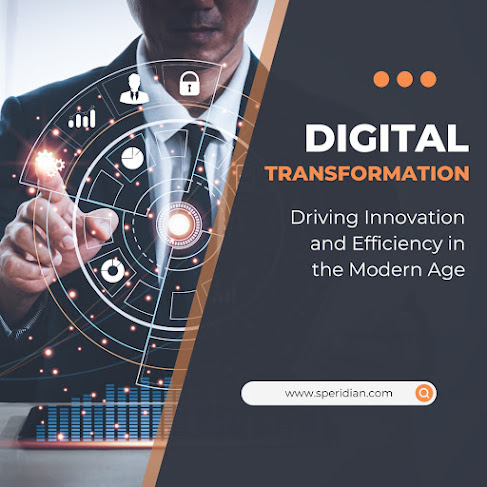In today’s world, digital transformation is not an option but a mandate for any business organization. Businesses worldwide are integrating digital solutions in the search for improvement of their business processes and consumer satisfaction. This blog lays out the fundamental questions about the meaning of digital transformation, its drivers, advantages, and how organizations can manage this important process.
What is Digital Transformation?
It is defined as the process level by which organizations make use of digital assets and resources across the company, thereby altering its business model and its productivity to the customer. It is about changing business procedures, organizational attitudes, and its approach to the clients.
Key Drivers of Digital Transformation
Customer Expectations: Consumers today expect brands to provide consistent and relevant experiences at any given time and through any channel. By deploying data analytics, AI, and CRM to cater to expectations, digital transformation assists businesses in meeting their clients’ expectations.
Technological Advancements: These opportunities include cloud computing that already started to be widely implemented in logistics solutions, artificial intelligence which can help to optimize many processes and IoT which can be used for tracking many aspects of the logistics process.
Competitive Pressure: It is a measure that organizations have to embrace so that they can survive the stiff competition that is found in the marketplace. Optimally, digital transformation offers the organization a way of remaining relevant and competitive in the market via flexibility, creativity, and rapid means to market.
Operational Efficiency: Automated processes remove inefficiencies and effect greater cost control and operational efficiency; taking pressure off management’s plates so that they can concentrate on different value-added activities.
Benefits of Digital Transformation
Enhanced Customer Experience: Analytics and data provide a better understanding of the customer's wants, behaviors, and demands so that they can be engaged through more relevant and exciting methods.
Improved Efficiency and Productivity: Reducing the routine work, optimization of processes and supply chain, and efficient resource utilization, enhance the entity’s efficiency and performance universally.
Innovation and Agility: Digital transformation fosters a culture of innovation and experimenting with new approaches based on IT to pervasively adapt to the new market changes and deliver innovative goods and services.
Steps to a Successful Digital Transformation
Develop a Clear Strategy: Start with the outline of the vision and the objectives that are to be met in the course of the process to fit the aims of the business. Determine or pinpoint the core value chain and generic strategies that need transformation and establish clear goals and targets.
Foster a Digital Culture: Promote a change-ready environment. Offer solutions to enable the employees to acquire a new attitude towards the technologies and methods being introduced.
Invest in the Right Technologies: Select technologies that enable the strategy and achieve the desired results. Evaluate the solution according to the factors such as scalability, compatibility with other systems, and usability.
Focus on Customer Experience: Maintain the customer as the core of your digital strategy. Capturing and leveraging customer information to improve the customers’ experience.
Measure and Iterate: Assess the changes you have been implementing to see the effectiveness of the digital transformation process. Be ready to improvise based on the feedback and the outcome when applying the strategy.
Conclusion

.jpg)
.jpg)
.png)
.png)
No comments:
Post a Comment